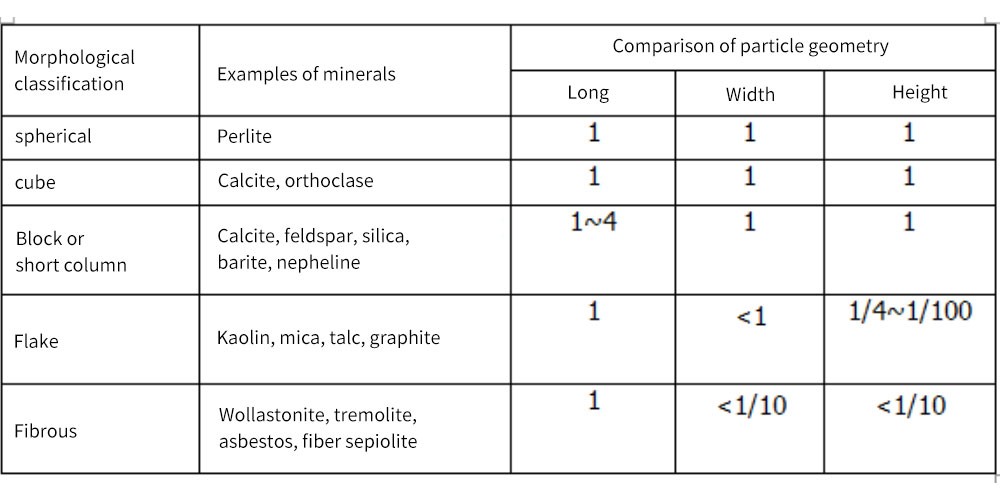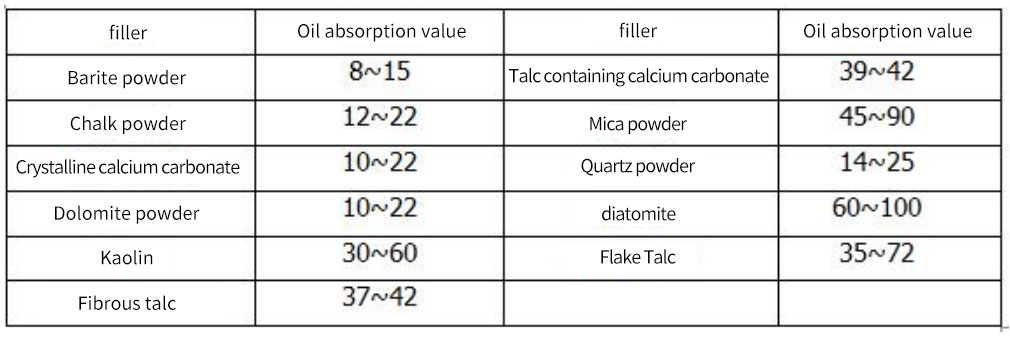Mineral fillers and their role in coatings
Filler is also called filler, which is a type of material added to materials (such as plastic, rubber, paper, paint, etc.) for filling. It can reduce costs, improve performance, and improve process characteristics of materials.
Fillers can be divided into two types: one is to reduce costs by adding cheap materials to higher-priced materials and does not change the material properties of inert fillers; the other is functional fillers with special functions, such as electricity Insulating, conductive, magnetic, flame-retardant, anti-static and reinforcing, etc., the material properties can be improved after being added.
Classification of mineral fillers
Fillers have a wide range of applications, a wide variety of varieties, and a variety of classification methods. According to the material composition, it is divided into three categories: organic fillers and inorganic fillers, or mineral fillers, plant fillers, and synthetic fillers.
- Classified according to the geometric form of the filler
Particles are in the form of fillers, and the shape of the particles is not very regular, but the geometric shapes of different fillers have significant differences. The particle shape of different fillers has a significant impact on the performance of the product.
Morphological classification of mineral examples, particle geometry comparison

- Classified according to the chemical composition of the filler
In filler modification, the chemical composition of the filler determines the essence of the filler, especially when the material is given functionality, the chemical composition of the filler plays a decisive role. American scholar Hurlbut divides the chemical composition of fillers into four categories: oxide, salt, elemental substance and organic matter.
- Classified by filler application
There are many kinds of minerals that can be used as mineral fillers, and they have a wide range of uses. According to the application fields of fillers, they can be divided into more than 10 kinds of fillers such as plastic fillers, rubber fillers, paper fillers, paint fillers, and paint fillers.
The role of fillers in coatings:
1. Play the role of skeleton and filling in the paint, increase the thickness of the paint film, and make the paint film plump and solid.
2. It can adjust the rheological properties of the coating.
3. Improve the mechanical strength of the paint film, such as improving abrasion resistance and durability.
4. Adjust the optical properties of the coating and change the appearance of the coating film, such as matting.
5. The film-forming substance undergoes a chemical reaction to make it into a whole, so that the coating film can effectively block the penetration of light, improve its water resistance and weather resistance, and extend the service life of the coating film.
6. As a filler in coatings, it can reduce the amount of resin and reduce production costs.
7. It assists the chemical properties of the coating film, such as enhancing anti-rust, moisture resistance, flame retardancy, etc.
The oil absorption value (g/100g) of non-metallic mineral fillers commonly used in coatings.

The fillers commonly used in coatings are calcium carbonate (heavy calcium, light calcium), barite powder (barium sulfate), talc powder, kaolin (porcelain soil), porous powdered quartz (silica), white carbon black, precipitated barium sulfate, Mica powder, wollastonite, bentonite, etc.
Calcium carbonate
Calcium carbonate is an important filler in paint production. Calcium carbonate plays the role of filling the framework and bottom plate (steel plate, wood) in the paint film, and enhances the deposition and permeability of the paint film.
Talcum powder
Talc is a universal filler in solvent-based coatings. It is currently used in various primers, intermediate coatings, road marking paints, industrial coatings and architectural coatings for internal and external use.
Kaolin
Kaolin is one of the fillers widely used in foreign coatings industry. Kaolin commonly used in coatings includes ultrafine kaolin, calcined kaolin, activated kaolin (surface modification treatment), etc. Kaolin can be used in various coatings, but mainly water-based architectural coatings.
Graphite
Natural graphite can be used in steel structure maintenance coatings due to its flake structure and good hiding rate. Its good conductivity and black color make it suitable for use in electronic and computer electrical shielding coatings. This coating can contain up to 75% graphite. Another use is anti-static floor coatings. It can be used in heat-resistant coatings, primers, sealing coatings and water-resistant coatings. Because of its good light resistance, it can be used in automotive paints as an effect pigment.
Wollastonite
The main component of wollastonite is calcium metasilicate (CaSiO3), which has a needle-like structure, good brightness, refractive index (1.62) and relatively low oil absorption (20~26g/100g)
Wollastonite with needle-like structure (length-to-diameter ratio is 10:1~20:1) can act as a smoothing agent in coatings, improve the mechanical strength of the coating film, and sometimes replace harmful asbestos in reinforced coatings. In coatings, it is generally used for relatively fine-grained (such as 325 mesh) and fine-grained (10μm) wollastonite powder, because it is beneficial to the hiding power of the coating. It can be used for oil-based architectural coatings, sound-absorbing (sound insulation) coatings, road marking paints, polyvinyl acetate latex paints, etc. Surface-treated wollastonite can be used in industrial alkyd, epoxy and other anti-corrosion coatings to improve the corrosion resistance of metal primers and partially replace active anti-rust pigments.
Article source: China Powder Network
